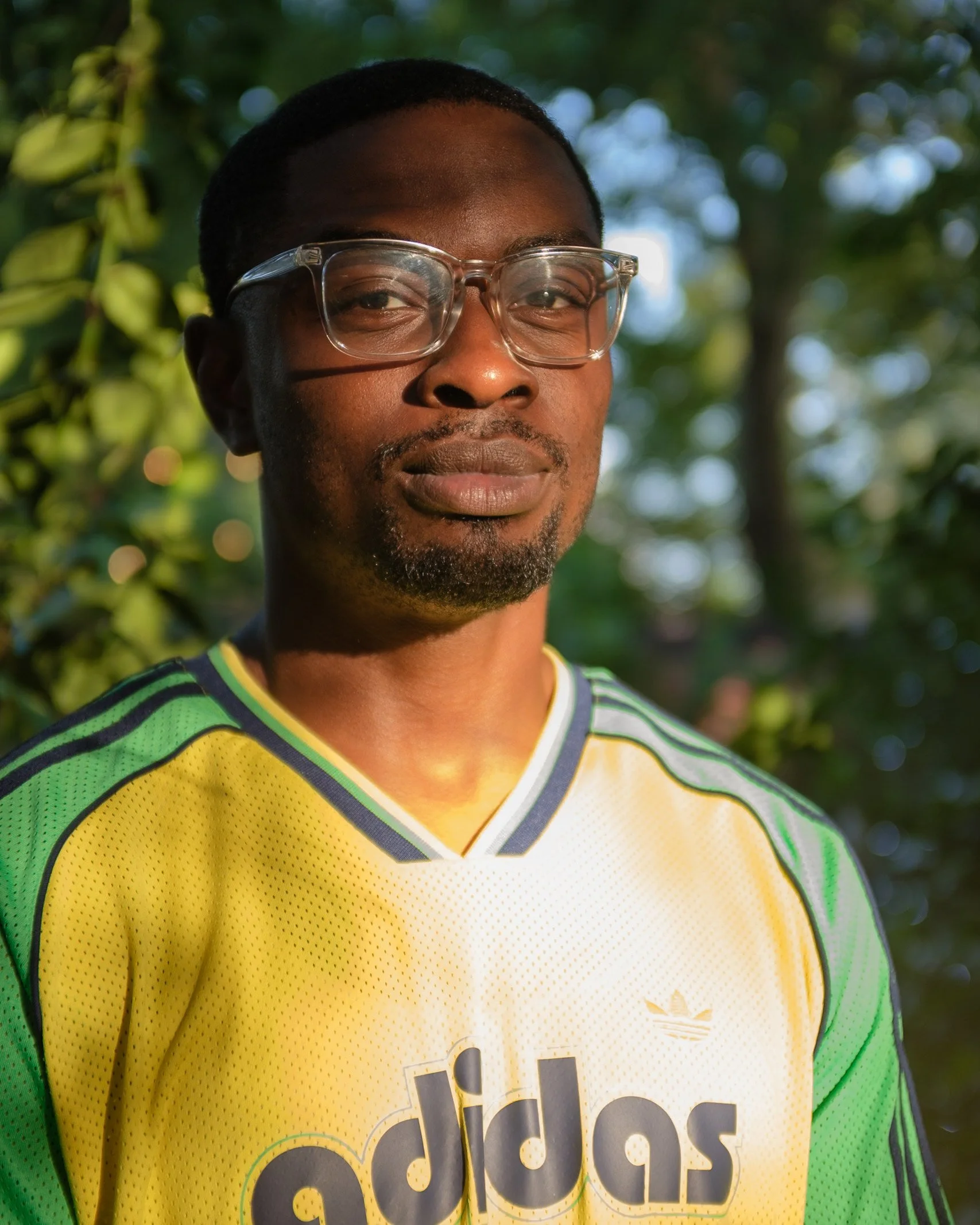August 2025 AIR: Jordan Matthew
“I’m more focused on posing questions”
Jordan! So glad you are here! As you ask yourself, why are things intuitive, what have you found in your research through making?
In my practice, I’m interested in exploring why certain things feel intuitive, but I’m not necessarily seeking any answers. Instead, I’m more focused on posing questions, particularly about the societal structures, norms, and historical contexts that shape our understanding of the world. How did/do we arrive at passivity, when behaviors just become expected?
Through my work, I am able to depict the questions I have about society conceptually and I do not think I am supposed to find out anything, in actuality, I do not want to. I’m more so interested in creating space for reflection, allowing the viewer to encounter these questions on their own terms. The goal is to give the viewer the same space I give myself to ponder and engage with the complexities of life. Some may be confronted by these questions, while others may not engage as deeply, and that’s completely fine.
How does light and composition play a role in your work?
Light and composition are necessary elements of my work that play a crucial role in conveying the meaning in each image. I love playing with the emotive nature of light, showing how it can communicate mood and intention, whether through the harshness of bright light or the softness of shadows. This ability to convey emotion is integral to my picture-making process. I like to use lighting as a tool that encourages ambiguity and questioning in the viewer.
Every photograph I create begins with a blank canvas, and the composition within the frame is highly intentional. I see each composition as a constructed frame in a larger narrative. And shooting with a 4x5 camera allows me to slow down and work meticulously, like a painter, where every detail is considered. The arrangement of objects, figures, and space within the frame isn't accidental; it's designed to guide the viewer's gaze.
By manipulating light and composition, I am able to craft images that tell a story and also invite viewers to explore the themes and ideas I’m investigating.
Can you tell us more about some of your assemblage pieces and how photography and sculpture are combined to convey your conceptual concepts.
Earlier this year, I struggled to convey my ideas purely through photography, and that’s when I started to think about how other mediums could help me express what I wanted to say. The move to assemblage felt like “the missing puzzle piece” because it offered a way to use everyday objects to tell their own stories. By bringing together materials, I could create something new that packs a punch with simple gestures.
For example, one of my assemblage pieces incorporates archival family images imposed on a wooden pallet. The pallet signifies commerce and becomes a metaphor for cultural history, while the photographs bring a sense of autonomy and belonging. These items juxtaposed create a tension that is very tangible and similar to diasporic history.
With assemblage, I aim to create works that are conceptual and material, offering layered interpretations and encouraging an investigation into the forces that shape our world.
In your work, you explore the construction of society and the lived experiences of Black people across the diaspora, as well as the ontology of Blackness. How do you hope your exploration of these themes helps to deepen understanding or spark dialogue around Black cultural traditions and identity?
I explore these themes to highlight the absurdity of anti-Blackness and oppression as a broader societal issue. I am interested in creating art that shows the farce of a hierarchical existence or creating something to just exist in the world. My intention is to affirm the existence of others and give a platform for viewers to connect with their own humanity and experiences.
While Black cultural traditions and identity are the language I use to verbalize my ideas, I am not using them to spark a dialogue about their existence. Instead, I use these tools for viewers to examine their perception of the world and reflect on how they interact within it. I want to encourage people to ask deeper questions about themselves.
How do you think being in Chicago will influence your practice—whether in terms of new ways of seeing, discovering new concepts, or engaging with the local community?
Chicago is one of my favorite cities that I visited as a kid, and now, returning as an artist, I’m curious to see how it will inspire me in new ways. I love the history of the city and the arts scene so I am excited to engulf myself in the landscape and just learn as much as possible while I am out there. I believe being in Chicago will greatly impact my practice by introducing me to fresh perspectives and ideas. Also, the opportunity to be in dialogue with photographers, artists, and the local community will push me to expand my artistic vision and see what I am capable of.
Jordan Matthew
Jordan Matthew, born 1998 in Atlanta, Georgia, is a multidisciplinary artist, creating conceptually based works, in photography and sculpture. He graduated from Georgia State University, receiving a BFA in Film and Video. His work is reflective, both an explanation of self and an examination of community. It invites audiences to contemplate the intricacies of the human condition and reflect on universal and subjective feelings. As a self-taught artist, Jordan's artistic journey has been shaped by Atlanta's rich history and cultural influences and the societal pressures of hegemonic masculinity.




